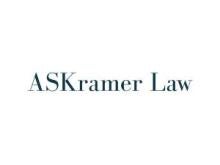Are there special hedging provisions for section 988 transactions?
Yes. In addition to the business hedging rules I address in our earlier Q&A with Andie series,[1] a special hedging provision is available at Code section 988(d) for certain hedges involving section 988 transactions. Let’s dive into the details on how section 988(d) hedges can be “integrated” with the underlying section 988 transaction(s).
What is a section 988(d) hedging transaction?
A section 988(d) hedge is defined as a transaction entered into by a taxpayer primarily to manage the risk of currency fluctuations with respect to property that is held (or to be held), or to manage the risk of currency fluctuations related to borrowings made (or to be made) or obligations incurred (or to be incurred).[2] The taxpayer must identify a section 988(d) hedge before the close of the day on which the transaction is entered into, although the IRS can make an identification at a later date under certain circumstances.[3]
A section 988(d) hedge must only manage currency fluctuation risk with respect to property or obligations of the taxpayer. But, unlike the tax hedge framework used to mitigate business risks I discussed in my earlier Q&A with Andie series[4], a section 988(d) hedge does not need to generate ordinary income or loss, and it does not need to be entered into in the normal course of the taxpayer’s trade or business. Even if the taxpayer has not elected into section 988 for its RFCs and nonequity options, those contracts can still be included in section 988(d) hedges.
What does it mean when the positions making up a section 988(d) hedge are “integrated”?
When exchange gain or loss from a section 988(d) hedge is integrated with the underlying section 988 transaction,[5] integration eliminates exchange gains and losses on both the hedge and the hedged property. Instead, exchange gain or loss is not computed separately on the hedge or the hedged property, but it is rolled into—that is, “integrated”—with the section 988 transaction that is the property being hedged.
When is integration available to a taxpayer?
Integration is available for section 988(d) hedges in the following situations:
- hedged debt instruments,[6]
- hedged executory contracts,[7] and
- hedges for the purchase or sale of publicly traded stock or securities between the trade date and the settlement date.[8]
I discuss each of these section 988(d) transactions below.
Can a section 988(d) hedge partially hedge a taxpayer’s currency exposure risk?
Yes. A section 988(d) hedge can hedge either all—or any part—of a taxpayer’s currency exposure.[9] A partial hedge is described as “The acquisition of a foreign currency denominated liability to offset exposure with regard to a foreign currency denominated asset.”[10] For example, a taxpayer can enter into a partial hedge if it “nets” assets and liabilities denominated in the same currency against each other to determine a net currency exposure. A “net hedge” is not a full hedge for tax purposes because the timing and amount of cash flows do not usually match. With such a net hedge, the offset could possibly create a straddle under the straddle rules at section 1092—so the taxpayer might prefer to make a section 988(d) hedging election to avoid application of those rules.
The Treasury Regulations provide partial integration rules for qualifying debt instruments (QDIs) and partially hedged executory contracts. If a debt instrument meets the requirements described at Treasury Regulation section 1.988-5(a)(3)(i) and all principal and interest payments under the instrument are hedged in the same proportion, that portion of the instrument that is hedged is eligible to be treated as a QDI.[11]
What is a Synthetic Debt Instrument?
When a taxpayer holds a QDI and a section 1.988-5(a) hedge, it holds a “synthetic debt instrument.”
What is a qualifying debt instrument?
In order to have a synthetic debt instrument that qualifies for treatment as a qualified debt hedging transaction, the taxpayer must hold a debt instrument (or QDI) described in Treasury Regulation section 1.988-1(a)(2)(i), regardless of whether denominated in, or determined by reference to, nonfunctional currency.[12] A QDI can consist of dual currency debt instruments, multicurrency debt instruments, and contingent debt instruments.[13] A QDI does not include accounts payable, accounts receivable, or similar items of expense or income.[14]
What is a section 1.988-5(a) hedge?
A section 1.988-5(a) hedge meets the requirements set out in the Treasury Regulations.[15] A section 1.988-5(a) hedge consists of a spot contract, futures contract, forward contract, option contract, notional principal contract, currency swap contract, similar financial instrument, or a series or combination of these instruments.
A section 1.988-5(a) hedge is integrated with the QDI if it meets all of the requirements set out in the Treasury Regulations at 1.988-5[16] and, together, they create a “qualified hedging transaction.”[17] When a taxpayer holds a qualified hedging transaction, it can calculate a yield to maturity[18] in the currency in which it is denominated.[19] Exchange gain or loss is not recognized on the QDI or the section 1.988-5(a) hedge.[20]
What are the requirements for a qualified hedging transaction?
The taxpayer must meet six requirements to have a qualified hedging transaction:
- All QDI nonfunctional currency payments must be fully hedged on the date the taxpayer identifies the transaction, so that a yield to maturity[21] in the currency in which the qualified hedging transaction is denominated[22] can be calculated.
- The section 1.988-5(a) hedge is identified[23] on or before the acquisition date of the constituent financial instrument(s) settlement or closure.[24]
- None of the parties to the respective transactions are related.[25]
- In the case of a qualified business unit (QBU) with a residence outside the United States, both the QDI and the hedge must be properly reflected on the books of the QBU throughout the term of the qualified hedging transaction.[26]
- The QDI and the hedge are entered into by the same individual, partnership, trust, estate, or corporation.[27] If a corporate taxpayer, the same corporation must enter into both the QDI and the hedge, regardless of whether it is a member of an affiliated group filing a consolidated return.[28] Corporate members of the same affiliated group are not considered to be the same entity for these purposes.
- If a foreign entity enters into a QDI or a hedge through its U.S. trade or business, all items of associated income and expense[29] must be effectively connected with the U.S. trade or business throughout the term of the qualified hedging transaction.[30]
Can a taxpayer identify a debt instrument as a QDI if it is part of a tax straddle?
No. If a debt instrument making up a hedging transaction is part of a tax straddle[31] prior to the time the hedge is identified, the IRS can determine that the transaction does not meet the integration requirements.
What are the identification requirements for the section 1.988-5(a) hedge portion of the qualified debt hedging transaction?
The taxpayer or the IRS can make the identification of a section 1.988-5(a) hedge. The taxpayer must make the identification before the close of the day that it enters into the hedge. The IRS, however, can identify the hedge at any time if the taxpayer has failed to comply with one or more of the identification requirements set out in the Treasury Regulations[32] and the IRS concludes that the QDI and the hedge are, in substance, a qualified hedging transaction based on all of the facts and circumstances.[33] The IRS can opt to identify a QDI and a hedge as comprising a qualified debt hedging transaction without regard to whether the QDI and the hedge are held by the same taxpayer.[34]
What rules apply to the taxation of a qualified debt hedging transaction?
The qualified debt hedging transaction consists of a QDI and a section 1.988-5(a) hedge, and they are treated as a single integrated transaction during the period that the transaction qualifies as a hedge.[35] A qualified debt hedging transaction is viewed as a QDI subject to Treasury Regulation section 1.988-5(a)(9)(ii). During the period of integration, neither the QDI nor the section 1.988-5(a) hedge is subject to the straddle rules at Code section 1092 and Code section 263(g), or to section 1256 contract treatment at Code section 1256.[36] If the qualified hedging transaction is part of a straddle, however, it may be subject to the straddle rules.[37]
[1] “Q&A with Andie: Business Taxation of Hedging Transactions,” an occasional series of ASKramer Law LLC, Spring 2024.
[2] Code § 988(d)(2)(A).
[3] Code § 988(d)(2)(B).
[4] “Q&A with Andie: Business Taxation of Hedging Transactions,” an occasional series of ASKramer Law LLC, Spring 2024.
[5] Code § 988(d)(1).
[6] Treas. Reg. § 1.988-5(a).
[7] Treas. Reg. § 1.988-5(b).
[8] Treas. Reg. § 1.988-5(c).
[9] Tax Reform Act of 1986: Conference Report to Accompany H.R. 3838: United States Congress (99th, 2nd session: 1986), September 18, 1986, 666 to 667.
[10] Id. at II-666.
[11] Treas. Reg. § 1.988-5(a)(3)(ii).
[12] Treas. Reg. § 1.988-5(a)(3)
[13] Id.
[14] Id.
[15] Treas. Reg. § 1.988-5(a).
[16] As defined in Treas. Reg. § 1.988-5(a)(3).
[17] As defined in Treas. Reg. § 1.988-5(a)(4). Treas. Reg. § 1.988-5(a)(1). Taxpayers that enter into cross-currency interest rate swaps to achieve lower interest rates are eligible for Treas. Reg. § 1.988-5. The foreign exchange risk is managed with the use of an additional derivative. The rules under Treas. Reg. § 1.988-5 allow a taxpayer to integrate a non-functional debt instrument with a foreign currency derivative denominated in its functional currency.
[18] Under principles of Code § 1272.
[19] Treas. Reg. § 1.988-5(a)(4)(i). A currency swap contract is defined at Treas. Reg. § 1.988-5(a)(4)(ii).
[20] The transaction is subject to Treas. Reg. § 1.988-2(b).
[21] Under principles of Code § 1272.
[22] As determined under Treas. Reg. § 1.988-5(a)(9)(ii)(A).
[23] Treas. Reg. § 1.988-5(a)(8).
[24] Treas. Reg. § 1.988-5(a)(5)(ii).
[25] As defined in Code §267(b) or §707(b). Treas. Reg. § 1.988-5(a)(5)(iii).
[26] Treas. Reg. § 1.988-5(a)(5)(iv).
[27] Treas. Reg. § 1.988-5(a)(5)(v).
[28] Id.
[29] Other than interest expense subject to Treas. Reg. § 1.882-5.
[30] As if Treas. Reg. § 1.988-5(a) is not applied.
[31] Code § 1092.
[32] Treas. Reg. § 1.988-5(a).
[33] Treas. Reg. § 1.988-5(a)(8)(iii).
[34] Id.
[35] Treas. Reg. § 1.988-5(a)(9)(i)(A).
[36] Id.
[37] Id. See also Code §§ 263(g), 1092, and 1256.




 />i
/>i
